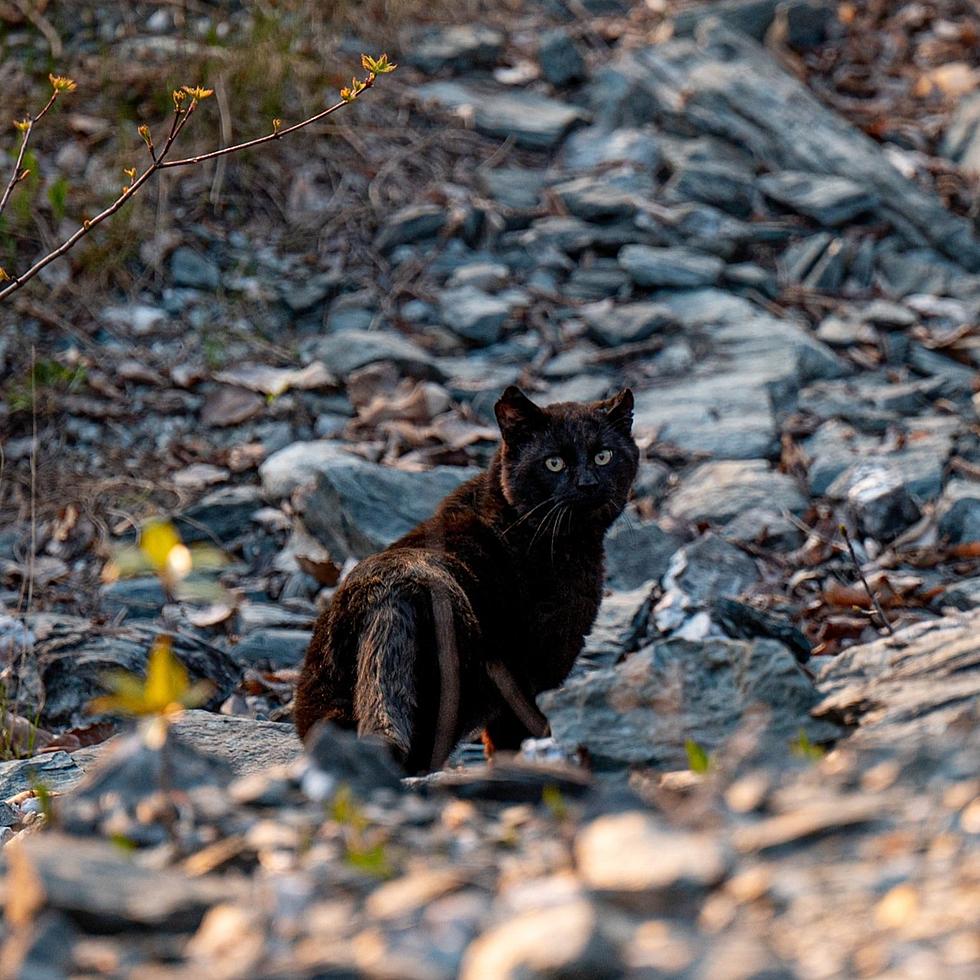
Wenatchee Valley Humane Society Addresses Community Cat Programs
Wenatchee Valley Humane Society (WVHS) is addressing their community cat programs following an article that detailed employee concerns over shelter changes.
Discussion began back in February, when local investigative journalist Dominick Bonney published an article that discussed the shelter’s Return-to-Home (RTH) policy and their Trap-Neuter-Return (TNR) policy.
These policies are part of the shelter’s Neighborhood Cat Project, which traps and neuters both social and feral stray cats and sends them to live in various local cat colonies in order to reduce the homeless cat population, decrease shelter occupancy, and control the cat population.
Cats who were already processed through the TNR program would have their ears tipped while under sedation.
The shelter received backlash over a social media post made in a Facebook group called “Notify Wenatchee,” a now deleted post that alleged the shelter was euthanizing cats to make room for kitten season.
Since that post, there were many community members who claimed that the shelter was releasing cats into the wild during the winter time, increasing the risk of hypothermia.
Bonney's article also provided testimony from three employees who quit in mid-February, all alleging that recently appointed Executive Director James Pumphrey created a toxic work environment and was condescending towards employees.
Pumphrey stepped into his role last December, taking over for his predecessor Dawn Davies. Before moving to Wenatchee, Pumphrey previously served as the Chief Operations Officer (COO) for the Animal Foundation in Las Vegas, which received backlash from the People for the Ethical Treatment of Animals (PETA) for accusations of abandoning social cats eligible for adoption.
Back in 2007, Pumphrey was working as the Shelter Operations Manager at the Cocheco Valley Humane Society in Dover, New Hampshire. While there, employees criticized Pumphrey’s management style and his ability to care for animals. However, claims of mismanagement or neglect were unsubstantiated.
Pumphrey addressed previous media coverage on him and compared people’s backlash to RTH as to when shelters began their spay and neuter programs.
“There were times where our industry moved to an open adoption policy, moving away from home visits and hefty restrictions and that also required change, and it also involved criticism,” Pumphrey explained. “But this is a science-based practice, it is the best practice, it's an industry-based practice.”
Pumphrey explains that a cat is more likely to be adopted in the wild rather than at a shelter and that these RTH programs greatly reduce overcrowding in shelters.
In 2022 alone, WVHS processed 1,803 canines and 2,833 felines throughout the year.
In one study, researchers found that in a New-Mexico-based animal shelter, feline euthanasia declined by 84.1%, with intake dropping down to 37.6% over a three-year timespan.
Along with that, the shelter saw more cats returned to owners, an increase in feline adoptions, and less calls on deceased cats.
In another case study, a Chicago neighborhood saw an 82% decrease in the cat population due to targeted TNR efforts.
During the pandemic, WVHS experienced a mass influx of both feline and canine intakes, whether it be because of owners rehoming pets for financial reasons, lack of spaying/neutering for animals leading to overpopulation, or because they took in animals from other shelters across the state, including several from Texas.
Employees shared several instances where they accidentally adopted out somebody else’s pet in the midst of the confusion.
Staff members were experiencing rapid burnout, animals were overcrowding at the shelter which led to decreased care, and ultimately all these factors increased employee turnover.
Animal Control Cpl. Nomi Stutzman has been working at WVHS for over eight years and recalled the time she nearly quit during the pandemic due to how stressed the shelter was.
“I would walk into the back and [my coworkers] would be crying because we were so overwhelmed with the amount of cats that we had at the shelter at that time,” Stutzman said.

After first hearing that the shelter would be returning cats to cat colonies rather than process them for adoption, some staff members were hesitant about the idea at first glance.
Staff member Christine Fantozzi started out as a volunteer and attended a volunteer seminar to learn more about the shelter's RTH program.
After learning about the science, Fantozzi said it still took time for her heart to match with her brain and process the fact that the shelter wasn’t going to process every social cat for adoption.
“That’s not possible for every cat, [there’s] just too many,” Fantozzi said. “If we do this [and] make these hard decisions now, we'll be able to see positive effects in the future.”
Cpl. Stutzman said her department ensures that every kitten returned is taken to a cat colony under safe circumstances.
“We've already taken in several kittens, one mother and some kittens, that were actually found out on the road,” Stutzman said. “Obviously, in that circumstance, those animals would not be a candidate for RTH. We're not going to raise these kittens and throw them back out into the universe, that's not something that we're doing.”
Former Animal Care Technician and customer service representative Rhiannon Gavin began working at WVHS in May, 2021.
According to Gavin, RTH policy states that kittens need to be at least 3 months old and medically well before they could be sent back out to a cat colony and that during the wintertime, the shelter usually pauses their TNR program and only opened their RTH program for feral cats.
Over the last winter, Gavin claims that the RTH policy began to change, with more responsibility going towards the shelter’s in-house veterinarian, Dr. Hayley Barkoviak.
“We were RTHing cats that were three months old all the way up to maybe six years old, in the middle of winter and two feet of snow," Gavin said. "We had a lot of those cats come back with frostbite or with infection."
Gavin recalled an incident when she received a call from a frequent visitor asking if they could bring in three stray kittens.
Due to miscommunication with the visitor, Gavin accepted the visitor's request before realizing that the kittens were noticeably underweight and had severe health issues.
“Turns out they have severe upper respiratory infection, their eyes were very goopy and crusty,” Gavin said. “Two out of the three couldn't even open one of their eyes, or both eyes.”
After getting approval from Cpl. Stutzman to waive the kittens into emergency foster care, Gavin claims that Pumphrey stormed into the lobby and asked her why she accepted these kittens.
“It's illegal for us to decline strays,” Gavin explained. [...] “He proceeded to rant about how we need to make sure that mom was with them and try and get her, to put them back where they came from, and that we shouldn't have taken them in the first place.”
Gavin said she felt belittled and humiliated towards the end of that interaction.
“He then told me that if it's a persistent issue, [I would] need to tell [the visitor] that we will no longer be accepting strays from her and that if she wants to set up her own rescue she can, but we will no longer help her with that.”
Her last day of employment was on Feb. 16, filing her two weeks notice shortly after her confrontation with Pumphrey.
When asked about the employees who spoke against him, Pumphrey said that the community needs to focus more on testimonies from employees who worked at WVHS for several years and to not focus on a few “disgruntled” employees who only worked there for a few months.
“The folks that may have been here for a short period of time that are choosing to make personal attacks, those aren't accurate,” Pumphrey said. “It really is inappropriate and kind of bullying behavior.”
Other staff members did share positive experiences with Pumphrey. Kathie Teeley, who has volunteered at WVHS for over a decade, said that he was the first Executive Director she has seen that tries to know each animal individually, rather than just fundraise for grants.
Puppy held by Wenatchee Valley Humane Society volunteer Kathie Teeley.
Cpl. Stutzman shared that the changes Pumphrey has been implementing are starkly different compared to the height of the pandemic.
“Even in the last three years, [the shelter] has made dramatic changes, and implemented new science-based programs and that we're seeing a positive growth from that we're seeing, less people being burned out, we're offering more training to individuals that need it.”
Gavin clarified on the fact that she thought Pumphrey had great ideas for the shelter, but was bothered by the lack of respect he showed towards front office staff.
“Anyone who worked at the vet clinic, or anyone who was in animal care and control, or anyone in administration, he would take their suggestions and their thoughts and opinions very seriously, because to him they're just higher than we are,” Gavin said.
Social media posts regarding the shelter’s community cat programs began to die down in early March. WVHS even dedicated a couple posts to staff, including Dr. Hayley Barkoviak.
When tensions were high, Cpl. Stutzman said the social media buzz was starting to get to shelter employees.
“[New employees] were crying because they felt that the community hated them, because posts were made on social media that were degrading the work that's [been] done at the Wenatchee Valley Humane Society,” Stutzman said.
Fantozzi said she was surprised when she read Bonney's article, but was relieved to see that it helped clear up some of the misinformation surrounding their community cat programs.
Gavin said she doesn't regret speaking out, but understands that it may be difficult to return to the shelter in the future. She also mentioned that she and other coworkers talked about creating a union,
“There were so many talks about us just walking out one day, but we can't really do that without having a union,” Gavin explained. “It was really difficult working for someone who just doesn't agree with a lot of what you're saying and then just wants you to agree with everything they’re saying.”
More From Kissin' 97.7









